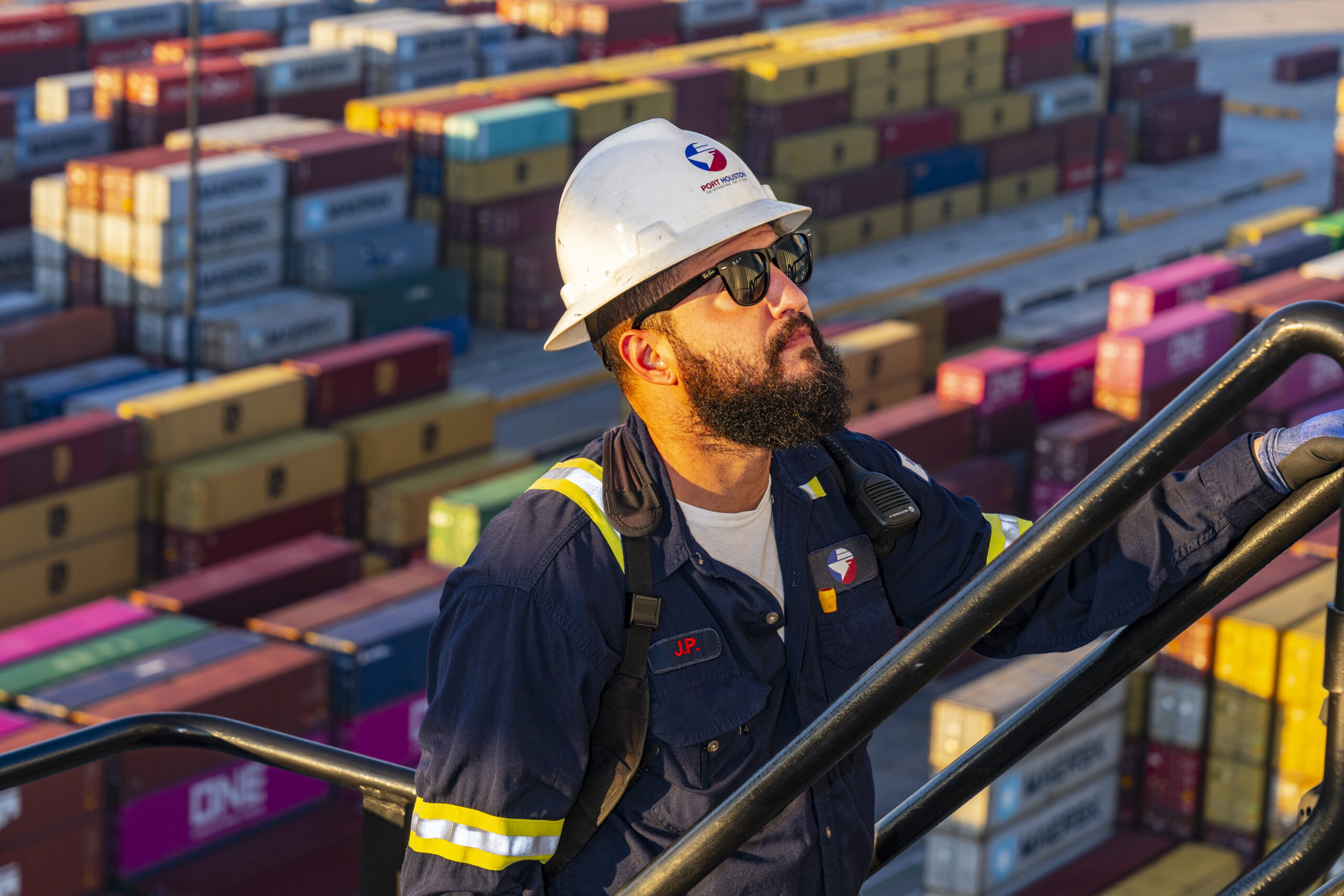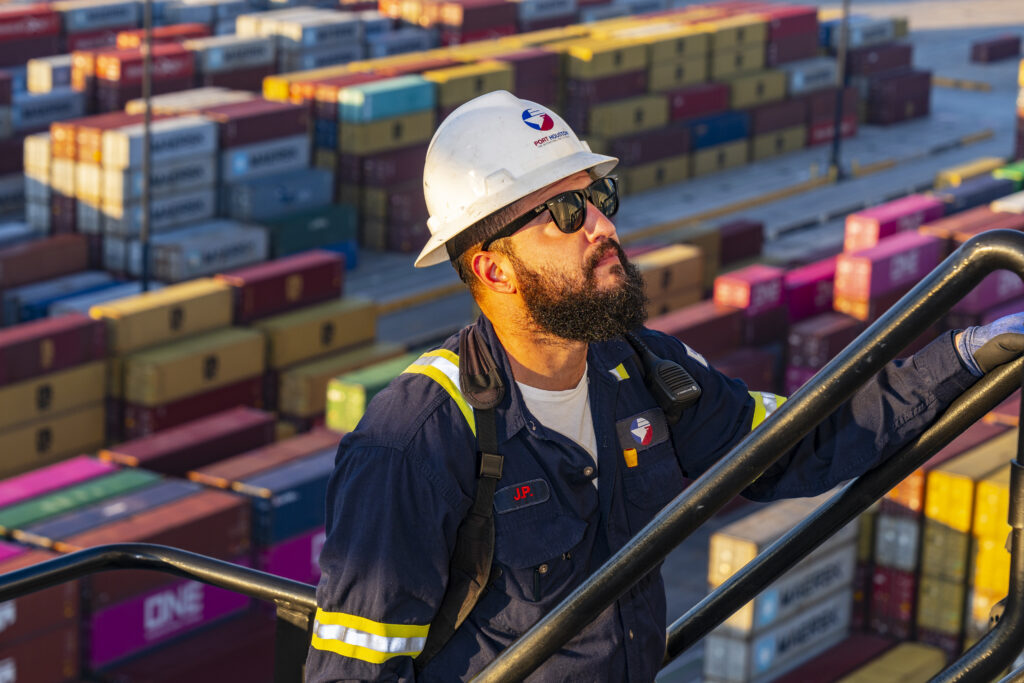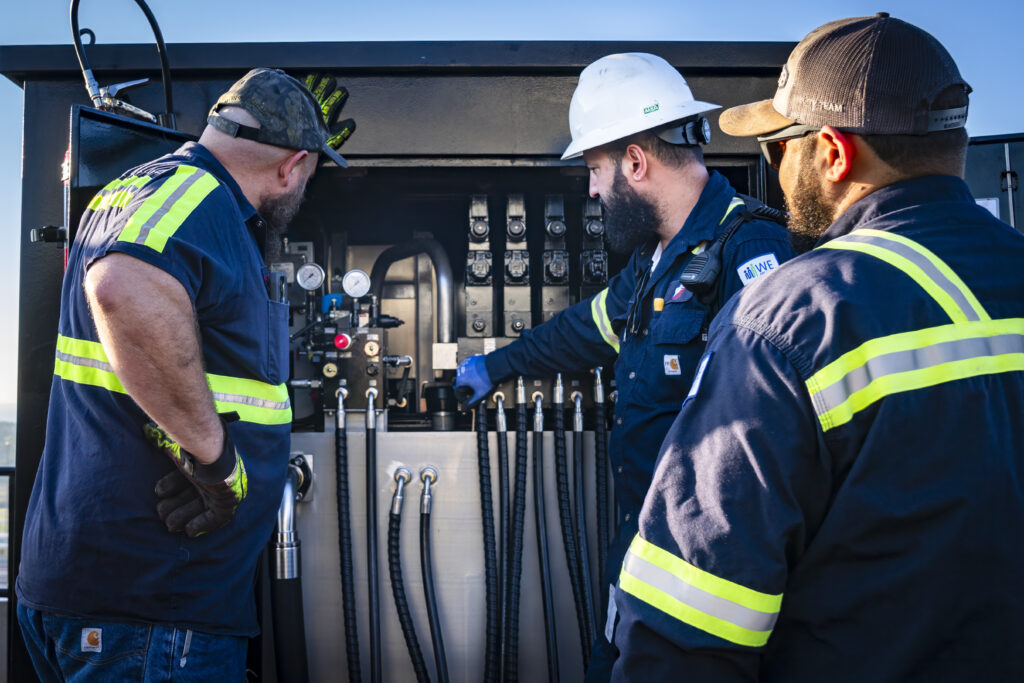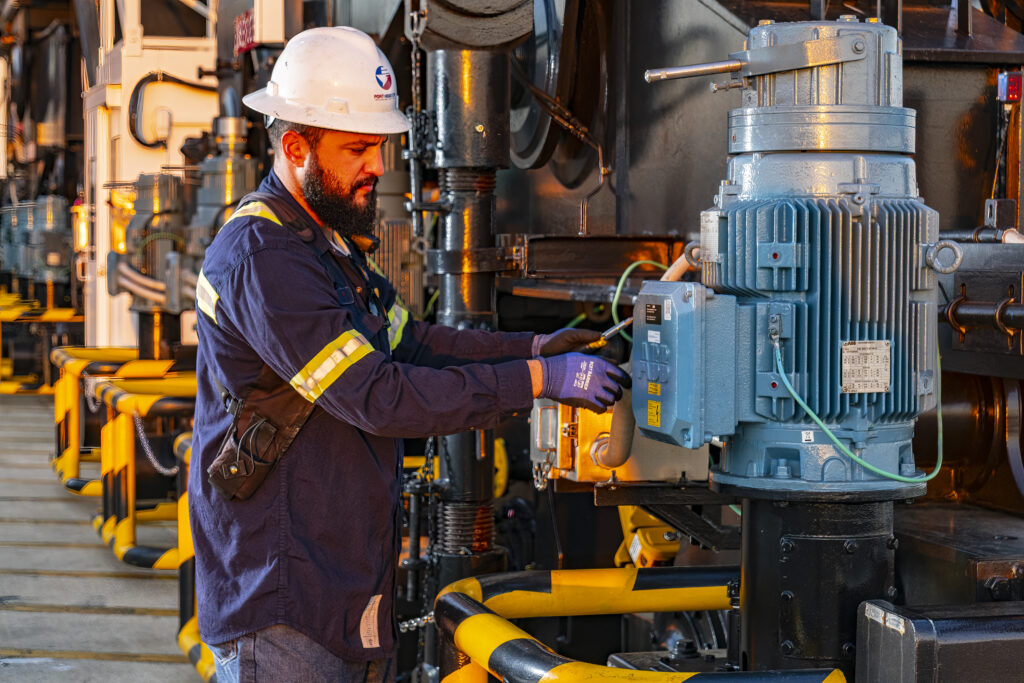A dedicated team of maintenance workers ensure equipment like cranes and forklifts operate seamlessly. While their work often goes unnoticed, their contributions are vital to the Port’s success. One such worker, John Perez, is a seasoned STS crane technician and provides a firsthand account of his role's challenges, rewards, and importance.
A Day in the Life of a Crane Technician
Each day begins with a focus on preparation. “I get everything ready, see who comes in, and direct tasks,” Perez explains. “Making sure the crane is running mechanically and safely is priority number one—nobody likes downtime. When a crane goes down, it’s a race to get it back up and running or shift the work to another crane.”
His routine may sound repetitive, but the tasks are diverse. Every day presents something new. “It’s a mix of common sense and technical knowledge,” he says, laughing. “Sometimes, the monitor will alert me to an issue before I even get to the crane. Knowing what’s causing it ahead of time helps me jump right into the fix.”

Skills and Expertise: The Lifeblood of Port Operations
For Port Houston’s maintenance professionals, specialized training in electrical and mechanical systems is key, and the learning never stops. “I started from ground zero with on-the-job and technical training, and it just comes with the territory,” Perez reflects. The ability to troubleshoot complex problems in real-time, often under pressure, is crucial. “If a crane stops working, it affects everything—operations slow down, ships back up, and congestion becomes a concern. Fixing things efficiently is vital.”
Perez understands the direct impact of his team’s work on Port Houston’s operations. “Each STS crane handles 30 to 40 moves per hour, and the Port averages more than 9,000 container moves daily,” he explains. Keeping cranes running smoothly is essential to maintaining Port Houston’s productivity. “Knowing I’m a key part of the process gives me pride. Fixing things and keeping operations moving makes me feel like I’m making a real difference.”
Some of his most rewarding moments come from tackling a particularly difficult issue that may stump other people. Perez says when he is able to fix something extremely complicated, it gives him a sense of empowerment and makes him feel dependable among his coworkers.
Maintenance work comes with its challenges, though. The Port operates 363 days a year, in all weather conditions, and problems can arise anytime. Perez says, “You just have to breathe and handle one thing at a time.”
Teamwork and Safety: The Foundation of Success
Safety is a top priority at Port Houston, and teamwork is essential to maintaining it. “We always work in pairs on the cranes—it’s about looking out for one another,” Perez says. Following safety protocols has prevented potential issues on more than one occasion, reinforcing the importance of vigilance and collaboration.
Coordination with other departments is also key. Complex maintenance tasks often require input from various teams, such as engineering, safety, and operations. For example, if a large piece of equipment needs to be replaced, the engineering department might provide technical specifications, while the safety team ensures that all installment procedures meet regulatory requirements. Additionally, operations may need to adjust schedules to minimize downtime during the repair. Communication between these teams, whether through daily briefings, detailed work orders, or quick check-ins via radio, ensures that each task is executed seamlessly. Teamwork prevents delays, keeps everyone on the same page, and ensures that safety and performance standards are consistently met.
As global trade continues to grow and demand increases, the work of the maintenance team remains critical to Port Houston’s ongoing success. Across the port, 296 dedicated maintenance professionals, including the 35 individuals on the STS maintenance team, play a vital role in meeting today's challenges and tomorrow's opportunities.


